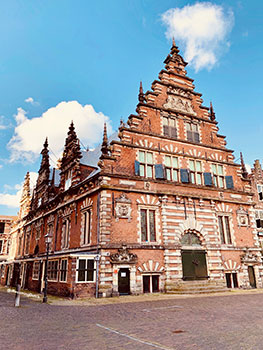HAU44015 and HAU44016 Architecture Beyond the Canon 1 &2

Module Organiser:Dr Maria Elisa Navarro Morales
Contact Hours: 1 x 2 hour seminar per week
Weighting: 10 + 10 ECTS
Assessment: Continuous assessment (50%) and examinations (50%)
The study of architecture has traditionally been structured through the selection of works considered exemplary and worthy of study. These works regulate and orient architectural production, lay claims of truthfulness and are supported by institutional authorities. In the construction on the artistic canon some works are sanctified and others dismissed. In this seminar we will focus on architectural manifestations not often included in canonical accounts such as underrepresented geographies, lesser known architects and other actors involved in the production of architecture, and architectural products beyond buildings such as ephemeral structures and publications.
While the value of early modern Dutch painters has been recognized and their works included in the study of Western art, Dutch architecture is rarely included in architectural surveys. In 2024/25 this module will study Dutch architecture in the early modern period, in particular in the Dutch Republic. We will explore how the ideas on classicism that shaped the architecture of Europe at the time were transferred and adapted to the context of a newly formed republic, how architectural production was structured and regulated in this new context and the role of interiors and gardens to represent the social values these buildings embodied.
Learning Outcomes
On successful completion of this module, students will be able to:
- Describe the main aspects of early modern Dutch architecture.
- Understand how architectural ideas travelled in the early modern period.
- Explain the role of architectural publications in the production of architecture in the early modern period.
- Use early printed books as primary sources for architectural history.
- Engage critically with secondary sources on architectural history.
- Communicate ideas formed from the study of both primary and secondary sources.
- Learn and reflect how to model and analyse architecture in two and three dimensions.
- Design two and three dimensional architectural models for the study of historical architecture

